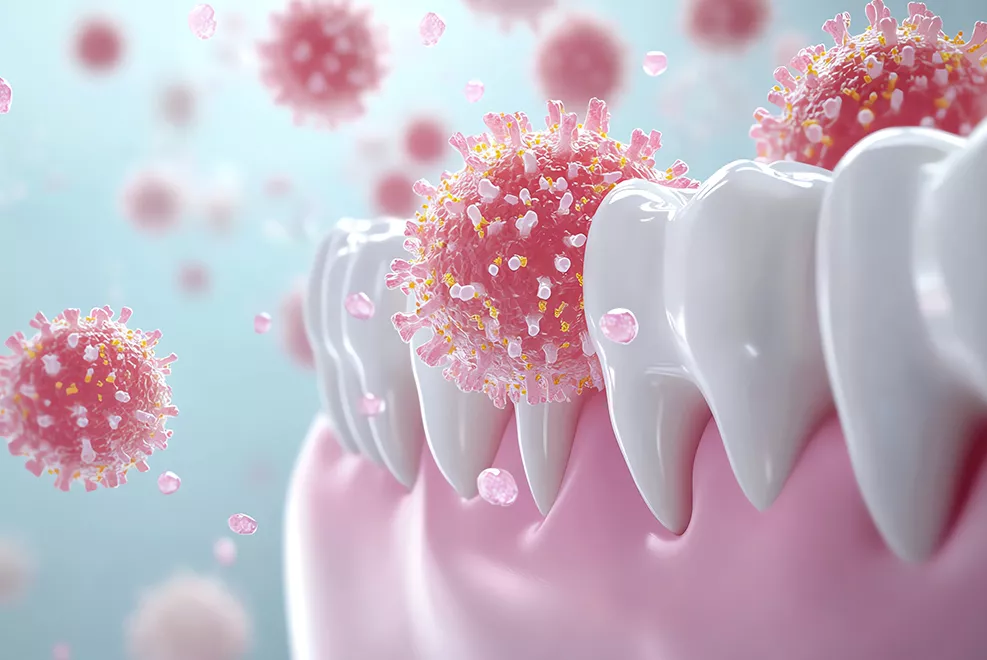After a tooth is extracted, live bacteria remain in the mouth—especially in patients with poor oral hygiene. Infections after extractions are quite common. Depending on the condition of the removed tooth, your dentist may prescribe antibiotics to significantly reduce the risk of infection. However, in some cases, even antibiotics may not fully prevent an infection.
Symptoms of Infection Before and After Extraction
If you experienced any of the following symptoms prior to tooth extraction, it may indicate that an infection was already present:
- Facial swelling
- Swollen gums
- Tooth pain when applying light pressure
- Bleeding around the extraction site
If an infection was present before the procedure, your dentist will likely prescribe antibiotics to take after treatment. In the case of a strong abscess, it may be necessary to first treat the infection with antibiotics before proceeding with the extraction.
In some cases, an infection may develop only after the extraction—even if no signs were evident beforehand. The cause is bacteria. After a tooth is removed, the mouth becomes more vulnerable to bacterial activity, and the open wound allows bacteria to enter. The risk increases because during the first 24–48 hours, using mouthwash or brushing the area is not recommended. As a result, the mouth cannot be sufficiently sterilized to prevent bacterial growth.
Main Symptoms of Infection After Extraction:
- Recurrent bleeding (usually within 48 hours after the procedure)
- Severe pain that worsens instead of improving
- Fever (above 38 °C / 100.4 °F)
- Pus discharge from the wound
- Unpleasant mouth odor
- Swelling that continues to increase
If you notice any of these symptoms, you should contact your dentist immediately.
Dry Socket (Alveolitis Sicca)
After a tooth extraction, a blood clot forms in the socket to protect the healing area. If the clot becomes dislodged or doesn’t form properly, a condition called dry socket may occur. This can cause intense pain and delay the healing process.
The risk of developing a dry socket increases due to:
- Smoking
- Using a straw
- Excessive rinsing of the mouth within the first 24 hours
If you suspect a dry socket, it is essential to visit your dentist for professional treatment.
How to Properly Care for the Wound After Extraction
To reduce the risk of infection, it is important to care for the extraction site properly:
- Avoid hot drinks and spicy or sharp foods
- Do not chew on the side of the extraction for a few days
- Do not rinse your mouth forcefully on the first day
- Apply cold compresses to the cheek to reduce swelling
- After 24 hours, gently rinse your mouth with salt water
If you follow your dentist’s instructions, the healing process should proceed without complications.
Antibiotics and Their Role
Some dentists prescribe antibiotics preventively even before the extraction. Even if a patient doesn't have an abscess, many dentists prefer to eliminate any potential infection before starting the procedure. The reason is that local anesthesia may not work well in infected tissue, and the dentist would then need to use a higher dose of anesthetics to achieve sufficient numbness.
If the tooth must be removed immediately and there is no time to wait for antibiotics to take effect, the area can still be numbed. Although this may require a higher dose of anesthetics, it is possible. In certain cases, dentists may opt for intravenous sedation or nitrous oxide (laughing gas) if local anesthesia proves ineffective. IV sedation will typically put you to sleep or deeply relax you, allowing the dentist to remove the problematic tooth painlessly.
Healing Time
The healing process usually takes several days to weeks, depending on:
- The complexity of the extraction
- The patient’s overall health
- The presence of other conditions (e.g., diabetes or a weakened immune system)
Alternatives to Antibiotics
If the infection is not severe, dentists sometimes recommend natural antibacterial treatments:
- Rinsing the mouth with chlorhexidine
- Using antibacterial gels
- Herbal mouthwash (e.g., sage tea rinse)
When to Contact a Doctor
You should contact your dentist promptly if you experience:
- Pain that doesn’t improve after a few days
- Fever or chills
- Significant facial swelling
- Difficulty swallowing or breathing
Although infections can be painful and require immediate attention, antibiotics may not always be necessary after a tooth extraction. If your mouth is clean and you don’t have excessive bacterial buildup, the wound can heal naturally with proper care. Rinsing with salt water during the first few days helps keep the wound clean. If you take good care of the extraction site and follow your dentist’s instructions, you should not experience any further complications.

